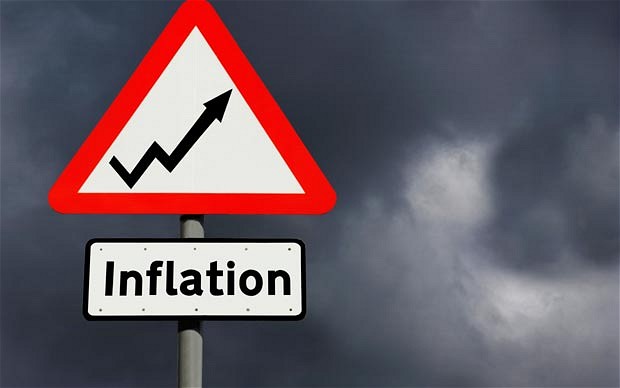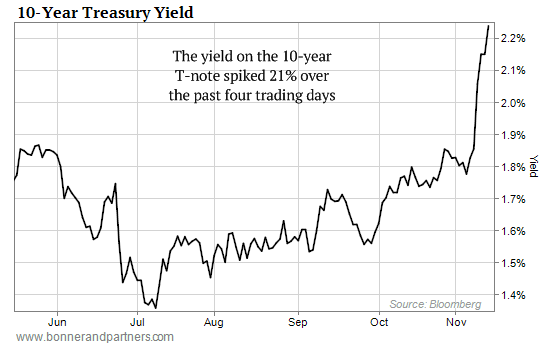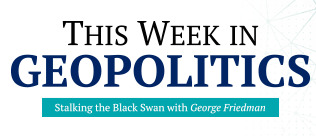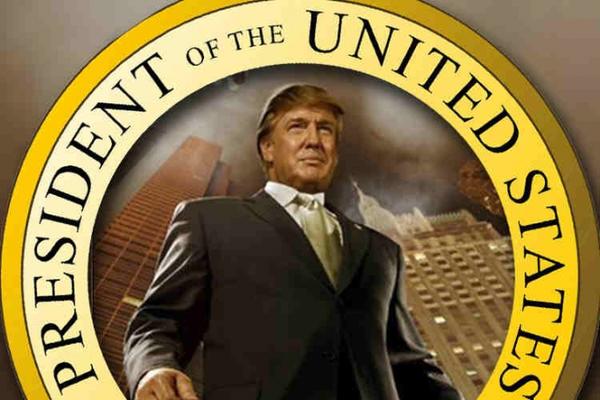Currency
 BALTIMORE – “I couldn’t believe it,” said a friend with grandchildren in a private school in the Washington area. “Their school provided grief counseling!”
BALTIMORE – “I couldn’t believe it,” said a friend with grandchildren in a private school in the Washington area. “Their school provided grief counseling!”
“Grief counseling?”
“Yes. Apparently, students were so upset by Donald Trump’s victory that the school thought it should provide psychologists to help them get over it.”
The New York Times, too, seemed to need therapy.
Its weekend edition is full of blaming, scapegoating, and flagellation. Hillary blames FBI Director Comey for her defeat. One columnist says white Americans have become racists.
Another says women are deplorable, too. They didn’t support Ms. Clinton as they should have. “Behind these angry white men are angry white women,” it points out.
Five days have passed since the election results were announced. Many people are still hysterical. They should calm down and take a closer look.
The System Works
Already, the dots are coming together. What we see is this: The system works!
That is, the system whose main purpose is to protect the system continues to do so.
“The Donald” may be getting ready to mount his throne. But the Deep State – America’s “shadow government” – stays in Heaven.
First, Mr. Trump used his victory announcement to signal that easy credit – upon which the system depends for funding – will get even easier.
To the easy monetary policy, he will add easy fiscal policy. As much as an additional $1 trillion will be spent on “infrastructure.” On credit, of course.
As one of Mr. Trump’s economic advisers, Anthony Scaramucci, wrote in the Financial Times this weekend:
While easy-money monetary policies have exacerbated the income divide, central bankers handcuffed by political dysfunction have had little choice but to provide extraordinary accommodation… [B]usiness people like Mr. Trump understand you can grow yourself out of excessive debt.
What we think he meant to say was that you can “inflate” your way out of excessive debt by spending more than you can afford – if you can get Congress to go along.
This new spending was just what President Obama asked Congress for and couldn’t get. It was what big-spending economists such as Larry Summers, Paul Krugman, and Joseph Stiglitz had urged.
It’s what the Financial Times has called for from the get-go. And now the same Republicans who stopped President Obama’s infrastructure spending proposals are expected to come forward and approve Mr. Trump’s program.
Steel! Ships! Concrete! Woohoo!
All Hell Will Break Loose
Politically, this is a great move. It is what Mr. Trump will have to do anyway (there’s no monetary stimulus left). And it will come as honey to working-class men, big business, Wall Street, and the Establishment. Even better, it could take years before their teeth begin to rot.
The Rooseveltian-Reaganesque agenda will come with tax cuts, too.
We have never met a tax cut we didn’t like, especially when they are aimed in our direction. So we are pleased to see Team Trump pledging to lower taxes on the rich… and possibly get rid of the estate tax.
You go, Donald!
In the long run, an easier fiscal policy will be catastrophic. The world economy now depends on ultra-low bond yields. And that depends on ultra-low inflation rates. You can get ultra-low inflation with easy monetary policies but not with easy fiscal policies.
The Treasury market is already anticipating rising inflation. Bond prices are falling; yields are rising… exactly what you’d expect if investors were no longer worried about deflation. [See more below in today’s “Market Insight.”]
When consumer price inflation starts to spike in earnest… bonds will fall hard… and all Hell will break loose.
What will the feds do?
What could they do? The responsible thing would be to raise interest rates to head off the inflation. But that would bring on the correction that they’ve worked so hard to avoid. Instead, they will do what all irresponsible governments do.
More spending… more stimulus… more inflation. Buenos Aires, here we come! Or maybe even Harare.
Inflation could become hyperinflation.
But that is still in the future… perhaps long in the future…
Hacks and Has-Beens
The third big dot we can connect is the rapid recovery of the stock market following its election-eve jitters.
When it became clear that Mr. Trump would be the 45th president of the United States, the first reaction was panic. Then the market sat down. Took a drink. And quickly realized that he posed no threat to the cronies or their inflated asset prices.
Au contraire – his program may give them a boost.
From an 800-point plunge in Dow futures following the Florida state returns… the index rebounded and then began a rally into a new all-time high.
In short, Wall Street is confident that “The Donald” poses no real threat.
As though to underline the point, Goldman Sachs CEO Lloyd Blankfein appeared in the news. Trump could be a good thing, he hinted to employees.
By the end of the week, we also had a look at Trump’s transition team.
Where were the outsiders? Where were the bomb-throwing revolutionaries?
Instead, the people entering the transition headquarters near the White House were the same hacks and has-beens who have been hanging around Washington for the last 40 years.
They were insiders, not outsiders.
Some were even veterans of the Reagan Revolution 36 years ago. Alas, they were the wrong veterans – the ones who stopped President Reagan from doing what he intended to do.
Tomorrow… why we will have no Reagan-style boom.
Regards,
Bill
….don’t miss Michael and: Don Vialoux on Fascinating Markets
Market Insight
Treasury yields have gone ballistic…
Since news of the Trump win broke on Tuesday, the yield on the 10-year Treasury note – a bellwether for borrowing costs throughout the economy – rose 21%.

That’s the biggest move in nearly two and a half years.
If Bill is right about Trump’s agenda, it’s not the last big move higher for Treasury yields.

 “If Trump stays true to his promise for energy independence, it won’t happen overnight, and the most logical alternative to OPEC imports would naturally be Canada. The U.S.’ northern neighbor has suffered a serious economic slowdown because of the international oil price rout.”
“If Trump stays true to his promise for energy independence, it won’t happen overnight, and the most logical alternative to OPEC imports would naturally be Canada. The U.S.’ northern neighbor has suffered a serious economic slowdown because of the international oil price rout.”

 Will President-elect Donald Trump deliver on his campaign promises to dig in with an anti-globalization stance and potentially start one or more trade wars?
Will President-elect Donald Trump deliver on his campaign promises to dig in with an anti-globalization stance and potentially start one or more trade wars?
I have no doubt that he will follow through on this promise. He was clear about one goal throughout his campaign: Getting much tougher on trade relations.
The president-elect has talked up a range of aggressive actions, including:
– Labeling China a currency manipulator …
– Slapping tariffs on goods imported from China and Mexico …
– And renegotiating or walking away from trade deals like the North American Free Trade Agreement (NAFTA) and the proposed Trans-Pacific Partnership (TPP) deal that President Obama was pushing.
If President-elect Trump delivers on the protectionist measures he pitched during his campaign, investors can expect increased market volatility, especially in bonds. In fact, it’s already started.
This week alone, global bond investors have seen more than $1 trillion in value wiped out. My view: It’s the start of the sovereign debt crisis as foreign governments and central banks — worried about trade — send a message to Washington. So if Mr. Trump carries through with renegotiating trade deals or slapping tariffs on goods, guess what?
Our U.S. Treasury note and bond market will get clobbered, interest rates will soar, compounding the interest on our country’s gargantuan debts … and …
As I’ve been saying, the piper will inevitably and finally get paid.
Washington will go bankrupt, right along with the U.S. Federal Reserve, which is stuck with more than $4.5 trillion of U.S. notes and bonds.
The fact is my cycles and AI models warned of a sovereign bond crisis long before Mr. Trump even decided to run for president. We were heading down this path no matter who became our next Commander in Chief.
Best wishes,
Larry

 The US presidential campaign contained a constant undertone of Russia and President Vladimir Putin. Putin said nice things about Donald Trump, and Trump about Putin. In fact, there is a small faction of Trump supporters that admires Putin for being a strong leader and for his position on gay rights and other matters. They do not see him as a former communist, but rather as a defender of Western civilization.
The US presidential campaign contained a constant undertone of Russia and President Vladimir Putin. Putin said nice things about Donald Trump, and Trump about Putin. In fact, there is a small faction of Trump supporters that admires Putin for being a strong leader and for his position on gay rights and other matters. They do not see him as a former communist, but rather as a defender of Western civilization.
The US also claimed that Russian intelligence tried to facilitate Trump’s election by hacking the emails of the Democratic National Committee and John Podesta, Hillary Clinton’s campaign chairman.
All of that is done now. Russia is Russia, the United States is the United States, and serious matters must be dealt with. To begin, we need to understand what real issues exist between the US and Russia. And at the heart of the matter is Ukraine.
The Russian view of what happened in Ukraine is that the US engineered an uprising in Kiev that drove out the legally elected government. The US says it did not engineer a coup, but it did support human rights activists opposed to a corrupt government in Ukraine. The Russian response is that the current government is no less corrupt.
The National Security Argument
After the change in Ukraine’s government, the Russians took formal control of Crimea and tried to foment an uprising in eastern Ukraine. It was contained by the Ukrainian military but not crushed. The Americans charged that the Russians were interfering with the internal affairs of the Ukrainian nation. The Russians responded that the US was audacious in making the claim.
In addition, the Russians pointed out that historically, Crimea had been part of Russia and was transferred to Ukraine in the 1960s. The Russians also had a treaty with Ukraine allowing control over the naval base in Sevastopol in Crimea. This base is vital to Russia’s national security. With an anti-Russian government in Kiev, Russia was protecting its rights under the treaty.
As for the uprising in eastern Ukraine, the Russians said it was a predominantly Russian region whose rights had been dismissed by the Ukrainian government. Russia said it wasn’t involved in a movement to establish a degree of regional authority, as had been done by ethnically distinct regions in many countries.
The US claimed the Russians were not only arming and directing the rebellion, but also had military designs on the country. So, the US and Europe placed sanctions on Russia. Russia demanded the sanctions be removed.
All this can be summed up by two charges. The Russians claimed the US was financing activists masquerading as human rights groups in order to destabilize those countries it wanted to control. Russia claimed that the goal of the US was to install pro-US regimes.
The US claimed the Russians were becoming internally more repressive and returning to the dictatorship that had existed in the Soviet Union. To the US, it appeared to be a matter of national sovereignty and liberal democracy. US President Barack Obama and Clinton’s insistence that this was the extent of US involvement was matched by the Obama administration’s fear that Putin was trying to recreate the former Soviet Union with a new ideology. Each claimed the other was aggressive and hegemonic.
Historical Buffer
A level beneath this also existed. Russia had survived for almost three centuries because of strategic depth. Historically, control over the Baltics, Belarus, and particularly Ukraine had been essential for Russia’s survival. Without this buffer zone, Napoleon, Kaiser Wilhelm II, and Adolf Hitler would have destroyed Russia.
The US move into Ukraine was therefore a fundamental challenge to Russian strategic interests (the Russians were less concerned by Europeans). Further, because the US knew it was a strategic challenge, it increasingly seemed that the Americans sought to destabilize Russia itself. A pro-US government in Ukraine (with forces trained and supplied by the Americans) was not acceptable.
For the past century, the US has had a consistent and fundamental strategic interest. If all of Europe united under a single hegemonic power, it would pose a threat to the survival of the US. Russian natural resources and manpower coupled with Western European technology and organization could more than match US power. US national security depended on control of the seas, which permitted American commerce and prevented foreign invasion. The only force that could challenge US Naval power would be a united Europe.
The US intervened in World War I in 1917, when it appeared the Germans had defeated Russia and were about to defeat the French and British to control all of Europe. The US fought in World War II to prevent another German conquest of Europe. The Cold War was designed to prevent a Soviet conquest and amalgamation of Europe. The US had to prevent the re-emergence of Russia as a potential hegemon.
Two geopolitical imperatives collided in Ukraine, clothed in a debate over human rights, national sovereignty, and charges of imperialism. Beneath all of this noise, the reality was that Russia could only regard US actions in Ukraine as an attempt to cripple or destroy Russia. The US was afraid that with Ukraine under Russia’s control, Russia would be able to slowly extend its influence among former satellites, and from there, into the center of Europe.
Subjectively the debate might have been about other things. Sometimes, political leaders don’t realize the stakes and proceed on an automatic path of action and response. Sometimes, they understand the issues quite clearly. In either case, as in economics, there is an invisible hand in geopolitics. Putin dismissed the human rights claims and saw Americans engage in making Russia incapable of defending itself. The US dismissed Russia’s claim that it had violated Ukrainian national sovereignty and focused on the potential threat that Russia could pose to Europe.
The US began working with Poland and Romania to build a defensive line. The Russians began an expensive process to create a more powerful military force. Then oil prices collapsed, and Russia faced an even deadlier situation.
Russia failed to develop a modern economy after 1992. It remained, like the Saudis, an energy exporter. And when the price of oil crashed, the Russians faced an economic crisis. The Soviet Union collapsed when defense expenditures rose and energy prices declined in the 1980s. That same configuration confronted Russia again, and Russia faced an existential crisis.
Putin first had to maintain national morale. He had to demonstrate that regardless of economic problems, he had made Russia a great power. He was not in a position militarily to wage war in Ukraine, but he was in a position to appear powerful. Engagement with American and European aircraft and ostentatious military exercises near borders increased the sense of Russian power at home and abroad.
This was the key to Russia’s involvement in Syria, which had no strategic value to the Russians. The US could easily isolate or destroy a naval base there, and Bashar al-Assad meant nothing to Putin. But the intervention in Syria allowed Putin to appear to be engaging the US on equal terms… in a place where the likelihood of a clash appeared great but had little chance of happening. Putin needed to buy time for his military to mature, or oil prices to rise, or both. Neither was likely to happen quickly.
An unofficial truce took hold in Ukraine. The Kiev government remained in place, Russia held Crimea, and fighting in the east was reduced to a low, yet constant, level. A reality had been produced. For Putin, this was not an unreasonable basis for an agreement.
Mutually Beneficial Agreement
A formal agreement would recognize the current Ukrainian government and accept its Western orientation. It would also bar US military aid and troops from Ukraine. The Russians would withdraw support for rebels, but they would be granted a degree of autonomy. Crimea would be a postponed issue (or one of those eternal diplomatic processes designed to appear that a problem is being addressed without actually addressing it). Russia would redeploy forces away from a threatening posture toward Ukraine, something it would be happy to do given Russia’s military constraints.
In effect, Ukraine would be neutralized, Russia would have made major concessions, and the US wouldn’t have to be concerned about a Russian move to the West. If either side broke the agreement, there would be time to respond. Ukraine is large. The problem is that the Obama administration was content with an informal reality and had no desire to give Putin the appearance of a victory.
Putin read this move as a desire to bring him down. That may have been on the administration’s mind, but distrust of Russia coupled with a lack of urgency meant endless conversations between US Secretary of State John Kerry and Russian Foreign Minister Sergey Lavrov, with no progress.
Putin’s interest in Trump derived from Trump’s lack of interest in foreign adventures and indifference to creating liberal democracies around the world. Trump’s argument is that the US needs an overriding interest in an area to engage. Given this position, he likely would acknowledge that Russian hegemony over Europe is unacceptable, but he would not plan to engage so early and so deep in a region of Russian interest. For Trump, a neutralization of Ukraine would be acceptable. The personal dimension, Putin hoped, would eliminate Obama’s desire to see him fall.
Beneath the jabber of the campaign (to which Trump contributed far more than his fair share) and the mutual public charges and counter-charges, the situation between the US and Russia can be explained. The basis for a mutual agreement emerges from that explanation. The reality is that Russia is not in a position militarily to conquer Ukraine, nor is the US in a position to defend it. As long as the Russians don’t return to the Carpathian Mountains and the US doesn’t go east of the Dniester River, no alarm bells need to be rung. Both sides know that conflict in the future is possible, but neither is ready for it now.
Trying to figure out Trump’s and Putin’s thinking is not easy. Intentions are buried under layers of bluster. But intent is clearer than many might think. It would be a quick success for both sides and would strengthen two weak political hands.

George Friedman
Editor, This Week in Geopolitics![]()
….related from Ozzie Jurock & Michael Campbell: The Good Bad & Ugly For Real Estate From a Trump Presidency

Ozzie on major moves in real estate that will flow from a Trump Presidency in both the US and Canada. Areas effected by Trump’s favoring coal, the military, marijuana, the Keystone Pipeline and infrastructure spending on the plus side. More on the negative side in this interview with Michael.
…related: The Main Investment Theme For the Next Decade













